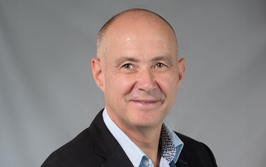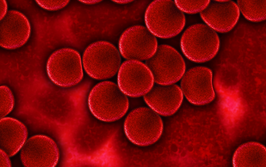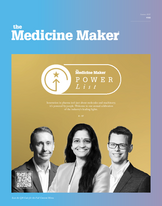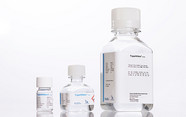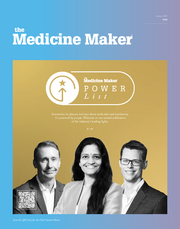
Breaking Through Rare Diseases
As the community celebrates another Rare Disease Day, we asked three rare disease drug developers about their work, the challenges facing the field, and what they would do with unlimited funds.
Stephanie Vine | | 8 min read | Discussion
The Experts

Craig Hopkinson, Executive Vice President, Research & Development and Chief Medical Officer at Alkermes

Huma Qamar, Chief Medical Officer at Ocugen

Obi Umeh, Global Vice President, Program Lead, Rare Disease immunology at Takeda
How do you define rare diseases?
Craig Hopkinson: In the US, a rare disease is classified as any disease that affects fewer than 200,000 people. Researchers have identified more than 7,000 rare diseases, which collectively are estimated to affect more than 30 million people in the US.
Huma Qamar: Defining “rare disease” is tricky. There are some well-accepted definitions out there, but for me it is more complicated than just statistics. Inherited retinal diseases, such as retinitis pigmentosa (RP) and Stargardt disease are so rare that doctors often miss or misdiagnose them. Patients can go undiagnosed for years. RP affects 310,000 patients in the US, EU, and Canada and is associated with mutations in more than 100 genes — so it defies the traditional definition of rare disease just by the numbers. However, there are no approved treatment options that slow or stop the progression of multiple forms of the disease. I feel that it is important for us to think broadly about rare diseases – and more imperatively consider that many conditions aren’t diagnosed and have no treatment options.
Obi Umeh: Rare diseases, by definition, don’t get a lot of attention, but that doesn’t mean the people living with them are any less deserving of our time. Patients should be able to live their best lives, regardless of the prevalence of their disease. Less than 5 percent of known rare diseases have approved treatments because of challenges such as small patient populations and limited understanding of disease variability and progression. This, to me, is unacceptable. As an industry, we must overcome the challenges by enabling faster diagnoses and equitable access to care. We can achieve this through impactful research, meaningful collaborations, and new technologies.
This work is deeply personal for many of us at Takeda. I’ve personally seen the challenges faced by patients and their families. Seeing my family member care for a child with a rare neurological disorder inspired me to contribute to this field, knowing that our efforts can bring hope and improve the quality of life for those affected by rare conditions. I encourage others across the industry to join us in this pursuit to activate meaningful change within the rare disease community.
What rare diseases is your company working on?
Hopkinson: Alkermes is researching a potential new treatment option for people living with central disorders of hypersomnolence, including narcolepsy type 1 (NT1), narcolepsy type 2 (NT2), and idiopathic hypersomnia (IH). Despite currently available therapies, people living with narcolepsy and IH have continuing high unmet needs. In one study of people living with narcolepsy – where 95 percent reported being prescribed treatment for their disorder – almost 3 out of 4 still experienced daily symptoms. For people living with IH, there is only one treatment option that is FDA-approved for this condition.
There is a lot of excitement around the orexin pathway because of its role as the master regulator of wakefulness. We’ve followed the science to get here, pursuing new molecules that leverage well-validated biological pathways. ALKS 2680, our lead investigational orexin 2 receptor agonist, is being evaluated as a potential therapy for NT1, NT2 and IH. This research program has several milestones on the horizon across 2025; we are currently enrolling patients with NT1 and NT2 in phase 2 trials, Vibrance-1 and Vibrance-2, and are actively planning a phase 2 study in patients with IH.
Umeh: We’re working on various medicines for serious chronic and rare diseases with high unmet needs. Our focus spans hematology, neuroscience, gastrointestinal and inflammation. Additionally, we are advancing treatments in hereditary angioedema, rare immunology, lysosomal storage disorders, transplant and plasma-derived therapies. Sixty percent of our pipeline targets rare and rare-like conditions, including late-stage trials for mezagitamab (TAK-079) in primary immune thrombocytopenia and IgA nephropathy, oveporexton (TAK-861) in narcolepsy type 1, and fazirsiran (TAK-999) in AATD-associated liver disease.
We’re really excited about mezagitamab, a potential best-in-class anti-CD38 human IgG1 monoclonal antibody with a unique MOA that enables it to target plasma cells and stop auto-antibody production. This could provide rapid, selective and sustained depletion of disease-causing immune cells, with the potential to be disease modifying. We've seen positive proof of concept results in immune thrombocytopenia and IgA nephropathy, with phase III trials in both indications slated for kick-off in 2025.
Qamar: Ocugen focuses on ophthalmic diseases. Within this, inherited retinal diseases are core to our mission. While these diseases affect relatively small populations, the impact on individuals and families is profound. These diseases can lead to progressive vision loss and blindness. We believe that everyone deserves access to sight-saving therapies. We believe that our breakthrough modifier gene therapy platform has the potential to treat multiple retinal diseases with a single injection. We're also exploring other rare disease areas where we believe our expertise and approach can make a difference.
Many rare diseases have little research and biomarkers to guide development. What are the main challenges in early development and how do you get started?
Hopkinson: Fundamental science is important. If you’re lucky, there may be building blocks to work with in pre-existing research. For example, NT1, the type of narcolepsy that is associated with cataplexy, is known to be caused by a lack of orexin-producing neurons in the brain. In addition, our preclinical research evaluated electroencephalogram (EEG) biomarkers to determine sleep/wake states in animal models, which has direct translatability to humans. While there is still much to uncover, this scientific base gives us a solid foundation from which to expand our clinical research towards new treatments.
Like rare diseases in general, sleep disorders are often misunderstood. It is very important to do your homework and listen to patients, caregivers, and healthcare providers to understand their experiences, challenges, and priorities. Making a meaningful and sustained effort to better understand their firsthand needs and perspectives has been an important factor in shaping our research efforts.
How do you approach the financial challenges of developing drugs for diseases with such a limited patient base?
Qamar: Developing drugs for rare diseases with limited patient populations is financially challenging. Patient recruitment is difficult and, for our studies, specialized procedures, such as retinal injections, are required, which adds to costs. It's all about balancing timelines, costs, and, of course, non-negotiable quality. Strategic planning is vital.
Umeh: There are serious financial challenges in developing treatments for rare diseases because of the need for specialized research and small market sizes. Some of these can be addressed through regulatory incentives, policy initiatives and advocacy efforts.
Additionally, new technologies, such as artificial intelligence and real-world data may be able to help reduce development costs. Real-world evidence is particularly useful in studying rare diseases because it enables researchers to gain better insights into patients' overall experiences beyond controlled clinical studies and collect more comprehensive data for regulatory submissions.
What is your advice for other rare disease therapeutic developers?
Qamar: Success in rare disease drug development demands calculated risk-taking and confidence in your vision. Effective communication and networking are crucial for building collaborations and securing support. It is important to learn from others' experiences, but don't let them define your path — be willing and prepared to be an outlier. Each rare disease presents unique challenges, requiring innovative solutions. Focus on the unmet needs of patients and don't be afraid to challenge the status quo. By combining these approaches, you can make a real difference in the lives of those affected by rare diseases.
Umeh: I would encourage developers to utilize the biggest and best resource we have – the rare disease community itself. It is such a unique patient and provider community, and Takeda has gained valuable insights and knowledge through actively engaging with like-minded patient advocates, researchers, healthcare providers, organizations and the patients themselves. By prioritizing listening to patients and the broader community, we can start to address health inequities and improve treatment outcomes.
Hopkinson: Follow where the science leads. As we’ve returned to our roots as a pureplay neuroscience company with a foundation in advanced medicinal chemistry, this science-first approach led us on a clear path to orexin where we quickly realized we’re in an ideal position to advance research with the goal of making a meaningful difference for the sleep disorders community, and – as our work continues – potentially people living with other CNS disorders as well.
If you had unlimited funds, what would you do?
Umeh: It’s critical that we think beyond treatment to other substantial challenges that impact the rare disease community. This includes supporting patients on their journey by improving the standard of care, accelerating time to diagnosis and breaking down barriers with value-driven partners to increase equitable access.
For example, Takeda and the National Organization for Rare Disorders are working together to bridge gaps in care and improve health outcomes for people with rare diseases, especially those living in marginalized and underserved communities. Together, we published a paper focused on increasing equitable access to genomic sequencing, expanding support for and access to centralized and specialized rare disease care, reducing barriers to research participation and improving the data landscape for a diverse rare disease population, and investing in accessible and culturally relevant rare disease resources for patients.
If I had access to unlimited funds, I would invest even more in these aforementioned areas. There’s so much more work to be done.
Qamar: Unlimited funds would certainly alleviate many operational challenges! We could accelerate clinical trials and patient recruitment. However, money isn't a magic bullet. Even with unlimited resources, a sound strategy and a viable product are essential. For me, the focus wouldn't just be on speeding things up; it would be on ensuring we're investing in the right things. I would prioritize research that truly addresses the underlying pathophysiology of the disease and that could demonstrably improve patients' quality of life. I would also invest in expanding access to these often-expensive treatments once they are approved. It's about maximizing impact; not just minimizing timelines.

Making great scientific magazines isn’t just about delivering knowledge and high quality content; it’s also about packaging these in the right words to ensure that someone is truly inspired by a topic. My passion is ensuring that our authors’ expertise is presented as a seamless and enjoyable reading experience, whether in print, in digital or on social media. I’ve spent fourteen years writing and editing features for scientific and manufacturing publications, and in making this content engaging and accessible without sacrificing its scientific integrity. There is nothing better than a magazine with great content that feels great to read.

